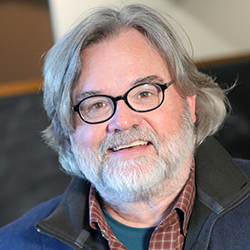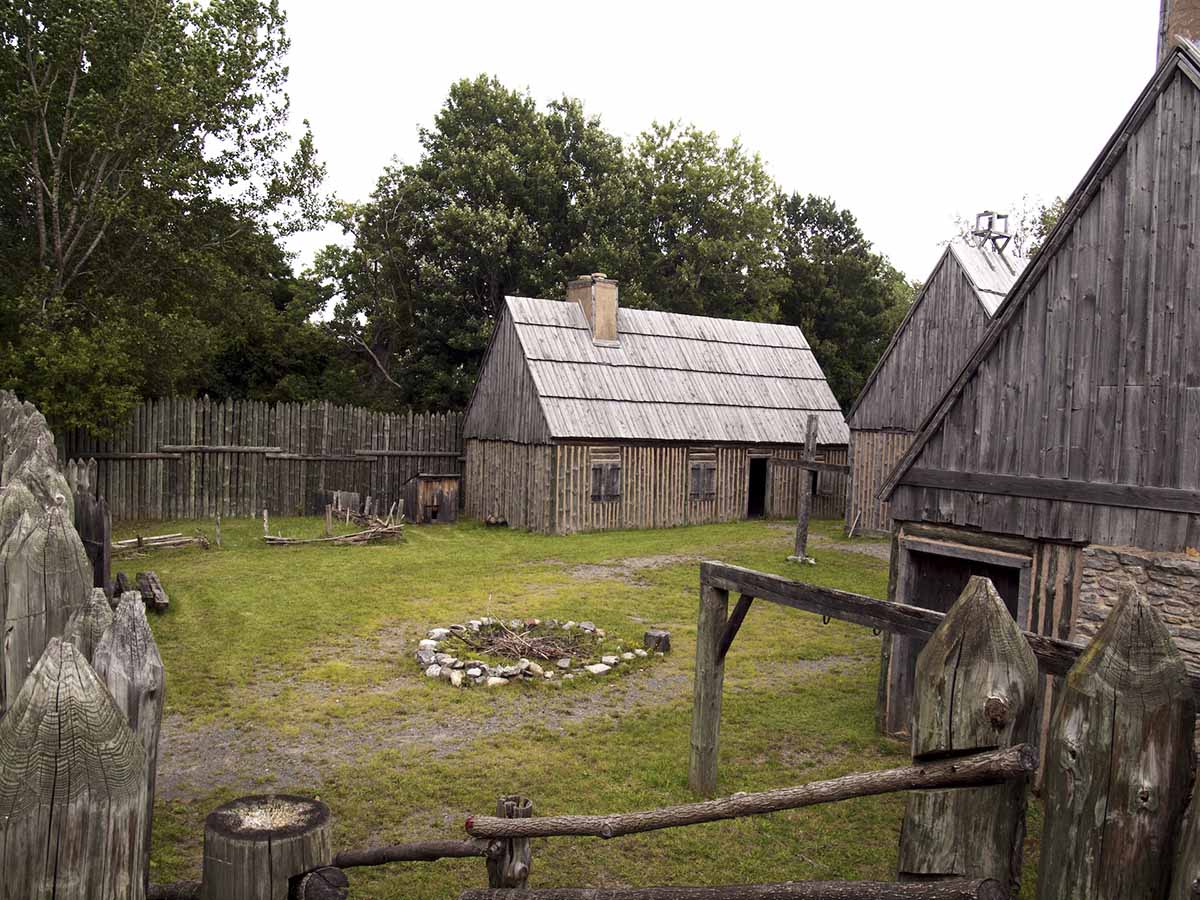Teaching “Native American Religions” in Central New York
When I began teaching at the University of Missouri in Columbia in 1990, the prevailing wisdom in the academy was to avoid teaching “Native American Religions.” It was regarded as professional suicide for a nonnative, white male to commit their research and teaching to this contentious and controversial area of religious studies. So far as I can tell, this attitude still prevails. But, even then, I understood the contentiousness of Native American religions to be an indication of its importance. My “Native American Religions” brings an awareness to students of the traumatic and turbulent nature of American culture like no other class of mine. In 1996 my family and I moved to Syracuse University, which is in the heart of Haudenosaunee country. This move changed everything; my “Native American Religions” class, by virtue of our physical location, makes the subject matter immediately relevant and urgent.
Syracuse University is located five miles north of the Onondaga Nation. Onondaga is symbolically the Central Fire of the Haudenosaunee. The Haudenosaunee are the “People of the Longhouse,” more generally known as the “Six Nations Iroquois Confederacy,” consisting of the Seneca, Cayuga, Onondaga, Oneida, Mohawk, and Tuscarora Nations. The shore of Onondaga Lake is the site where the Confederacy was founded; three men joined together there and convinced the Haudenosaunee to dedicate themselves to the Great Law of Peace by throwing their weapons of war into the roots of the Great Tree of Peace. Of the 563 tribal entities recognized by the U.S. federal government today, only three are still governed by their ancient ceremonial systems. All three are Haudenosaunee, and one of these is the Onondaga Nation. Onondaga territory is still controlled by the Longhouse system of government. All Longhouse people at the Onondaga Nation hold their clan through their mother. Male chiefs are “raised” through their matrilineal clans by Clan-mothers. The Haudenosaunee system of governance impressed and influenced the “Founding Fathers” of the United States Constitution, as well as the women in the 1840s at Seneca Falls who contributed to the Women’s Movement.
Most Haudenosaunee nations have filed “land-claims” throughout upstate New York, including the Mohawk, Seneca, Cayuga, and Oneida. Since the mid–1970s “Indian land-claims” have come to dominate local media attention, if not the attention of national and international media. There has been an intensely negative reaction among nonnative residents of New York to these actions — nothing in American culture raises controversy faster than contestation of land title. But the Onondaga historic “Land Rights” action on March 11, 2005, was completely unique, for it is based in the traditional values of the Longhouse tradition: peace, justice, and environmental healing of the land, particularly Onondaga Lake, which is simultaneously the site of the indigenous root of democracy AND the most polluted lake in the United States. Although the Onondaga action is based in the same legal history as the actions of other Haudenosaunee nations, rather than a monetary settlement, or one that includes a casino deal with the state, the Onondaga Nation instead seeks to restore the integrity of the environment: it seeks to restore Creation to a pristine state — hence the emphasis on “land rights” as opposed to “land-claims.” As the preamble of its legal action states:
The Onondaga people wish to bring about a healing between themselves and all others who live in this region that has been the homeland of the Onondaga Nation since the dawn of time. The Nation and its people have a unique spiritual, cultural, and historic relationship with the land, which is embodied in Gayanashagowa, the Great Law of Peace. This relationship goes far beyond federal and state legal concepts of ownership, possession, or other legal rights. The people are one with the land and consider themselves stewards of it. It is the duty of the Nation’s leaders to work for a healing of this land, to protect it, and to pass it on to future generations. The Onondaga Nation brings this action on behalf of its people in the hope that it may hasten the process of reconciliation and bring lasting justice, peace, and respect among all who inhabit this area.” (Onondaga Nation v. New York State, Civil Action No. 05-CV-314)
Because of the strong values of environmental healing, several non-Haudenosaunee people — including myself — have become motivated to promote the Onondaga Land Rights action. Neighbors of the Onondaga Nation (NOON) has grown to inform local nonnative groups about the positive aspects of this legal action for this region. Various institutions such as the Syracuse Peace Council, SUNY–College of Environmental Science and Forestry, and Syracuse University, with the support of Chancellor Nancy Cantor, have combined forces to hold a year-long educational series titled “Onondaga Land Rights and Our Common Future.” Several other events have been planned for the near future that bring together environmental issues, global politics, social justice, and cultural identity around matters of “religion.”
This serves as the backdrop for teaching “Native American Religions” in Central New York. Questions about the meaning of land, American cultural identity, and the contentious understanding of “religion” (which is a persistent question among all of my colleagues in religion at Syracuse University) are necessarily brought into the classroom. The first task of the class, therefore, is to problemitize the category of religion for students. Among the first things one learns is that there is no word, concept, or phenomenon internal to Native American traditions that is “religion.” The Onondagas are adamant on this point. Thus, several moves have to be made to make “religion” comparable with various aspects of Native American traditions. Students have to think of “religion” in a fundamentally different way. Specifically they have to think of religion as habitation and religion as exchange. These moves bring up questions about the nature of the ways in which different people come to inhabit the land differently and how different people perform exchanges between themselves and their deities. But these are existential questions that come up when teaching Native American religions in Onondaga Nation Territory. The result is that students tend to investigate their own lives in the context of learning about others. When students who have not been exposed to Native American traditions learn about them for the first time, it can have a dramatic impact of them and how they understand their place in the world.
I bring my collaborations with the Haudenosaunee into the classroom. Living and working in Central New York makes teaching “Native American Religions” more urgent and controversial, as well as more satisfying. Reading materials are supplemented by visits to historical places and visits from the leadership of the Onondaga Nation, including Clan-mothers, Faithkeepers, and Chiefs. I also give students a number of opportunities to attend outside lectures, cultural festivals, and lacrosse games for extra credit. Often I can take a small group to visit the Onondaga Nation School. But students need to be given theoretical tools for interpreting their encounters with the Onondagas. After all, more than 500 years of intimate yet contentious interactions between indigenous and immigrant Americans has yielded little genuine intercultural sharing. Therefore the student experiences have to be guided in order that they can benefit the most from them. Students need conceptual tools in order to explore their own fascinations with respect to Native American religions. This learning takes place before, during, and after contact with the leaders of the Onondaga Nation. At least since Edward Said’s work Orientalism decades ago, questions about how the scholar of religion can adequately describe “the other” without interrupting or destroying them are among the most pressing methodological discussions in our field. Students in my classes come to appreciate these issues firsthand. What might start as a casual interest in an exotic topic can, by the end of the semester, come to raise all kinds of vexing questions.
The shift from an expert model of knowledge production to a collaborative model goes some way toward solving the methodological quandaries in the classroom. Rather than my asking questions about what the Onondaga believe, or what ceremonies they perform, which will always be regarded suspiciously, instead students learn to ask themselves, What are the issues of most urgent mutual concern? For one thing this requires students to develop an ability to interpret their own urgent questions — What do we want to know? — and then find answers through a collaborative process of discussion and action. No longer are the Haudenosaunee, nor the Aztec, nor the Lakota “informants.” Instead, they are collaborators in generating new ways of communicating solutions to urgent issues.
The result of teaching “Native American Religions” in Syracuse has been that I have had to develop new classes over the last ten years to cover an ever-burgeoning conceptual ground. To explore questions of religion as “habitation” and “exchange,” I developed a history of American religions sequence titled “Religion and the Conquest of America” and “Religion of American Consumerism.” These cover the colonial era from 1492 to the 1850s and the modern era from the late nineteenth century to the present. This sequence highlights the cultural differences between indigenous and immigrant values and asks pointed questions about the sustainability of these distinctive worldviews. To explore issues of race and ethnicity in America I have developed the class “Religious Dimensions of Whiteness.” This class has been growing in popularity and attracts a wide diversity of students. Most recently I have developed the class “Religion and Sports,” which is proving to be very popular. Unlike other classes of this sort, however, it is rooted in the indigenous meanings of sports in ceremonial life. The Haudenosaunee are the inventors of lacrosse, which is very popular in our area, and it is still played as a ceremonial game among the Haudenosaunee. It isn’t until the class visits the lacrosse arena at the Onondaga Nation that the whole class comes together for them. In my graduate seminar “Materiality of Religion,” students gain another perspective on the topic and on the history of religions, whether their primary area of interest is in postmodern theology, Buddhism, religion and popular culture, or indigenous religions.
Teaching “Native American Religions” at Syracuse University has changed me as a scholar and a teacher. It is a contentious place to teach but, as I had originally thought, this indicates its importance. After taking my classes, students generally understand and appreciate these things more.
SUGGESTED CITATION
Philip P. Arnold, "Teaching “Native American Religions” in Central New York," Doctrine of Discovery Project (1 October 2006), https://doctrineofdiscovery.org/blog/teaching-native-religions/.
Share on
X Facebook LinkedIn BlueskyDonate today!
Open Access educational resources cost money to produce. Please join the growing number of people supporting The Doctrine of Discovery so we can sustain this work. Please give today.

